Over the past few weeks, the proposed East West Link has seen a lot of critique by concerned citizens. While the government tries to exclude the public from the consultation process, an assessment of the facts reveals why it has all interest to do so: looking at the details, the project will see losers on all fronts.
Even if the Victorian Government further maintains its position not to disclose relevant information (as it would be expected for such an important project) one can get an idea about potential impacts from the few documents available on the Department of Planning and Community Development (DPCD)’s website. The project will demand for a lot of sacrifices while it is not clear who will benefit and to what extent.
“The losers”
Landscape
A look at a map (or an aerial photo) makes it evident for anyone that the project will have a significant impact on Melbourne’s landscape.
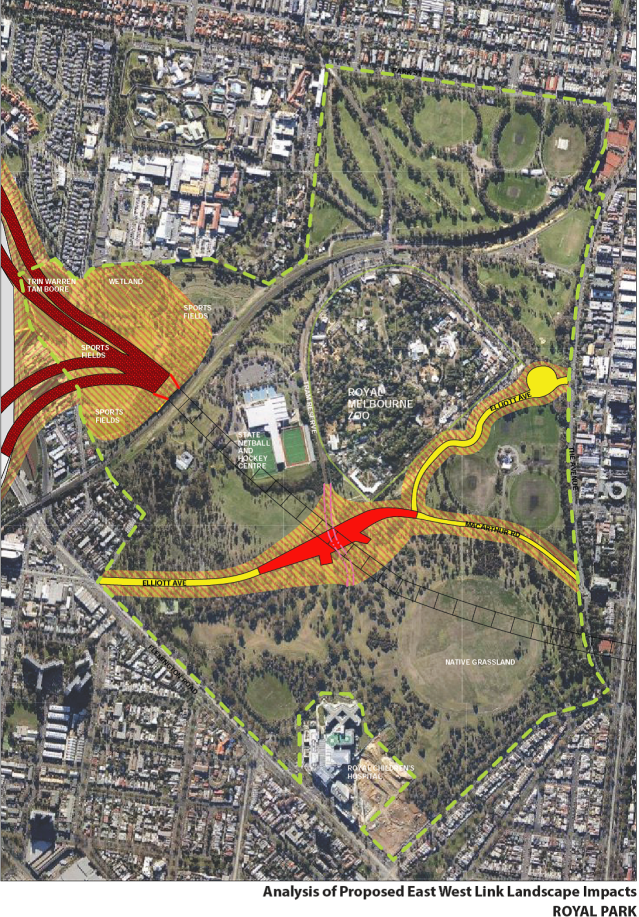 Overview project impacts West part (Source: AILA)
Overview project impacts West part (Source: AILA)
Royal Park sticks out as a huge green area in the heart of Metropolitan Melbourne. The project would destroy the large part of it, not only during construction, but forever. The Australian Institute of Landscape Architects have published a position paper explaining that “an East West Link Stage 1 tunnel could have provided the opportunity to reunite the north and south sectors of the [Royal] park, but instead the Authority, showing its ignorance or disdain for park planning issues, has decided to locate the only tunnel exit between Hoddle Street and Tullamarine Freeway right in the centre of Royal Park at Elliott Avenue.” The statement further reveals that not only would the impacts be significant, but “no amount of landscape architectural work would be able to adequately offset or rectify the project’s impacts.”
The outcome looks even worse if we consider what the Eddington report had suggested years ago: “The construction of the cross city tunnel would require an area of the park to be used as a works site to access tunnelling works.”
Flora and Fauna
A report published in March this year and available on DPDC’s website assesses potential impacts on flora and fauna. Amongst others, the findings show that “two species of plant (Tragus australianus and Acacia cupularis) and three species of animal (Australasian Shoveler, Hardhead and Nankeen Night Heron) have been previously recorded within the indicative corridor”, all listed on the Department of Sustainability and Environment(DSE)’s Advisory Lists of rare and treated species.
The report further shows that a regionally significant population of White’s Skink is located within Royal Park. The distribution of this species has been reduced significantly in recent years and the Royal Park population is one of the few remaining within the Greater Melbourne area. For its conservation, the Melbourne City Council has established a designated protected habitat area. As can be seen from
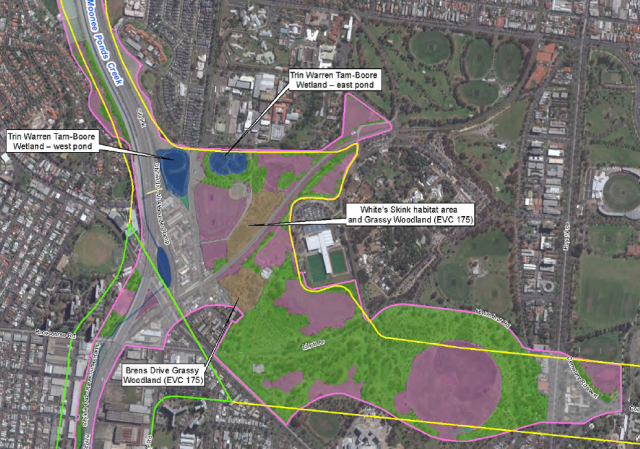 Overview project and impacts on habitats (Source: DPDC)
Overview project and impacts on habitats (Source: DPDC)
the two maps, the project would destroy the entire habitat and hence most probably extinguish the whole population of White’s Skink.
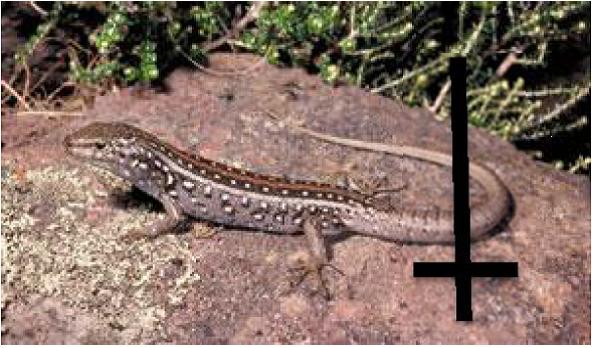 Extinct? The population of White’s Skink (Egernia whitii) in Royal Park would disappear (Source Photo: Museum Victoria)
Extinct? The population of White’s Skink (Egernia whitii) in Royal Park would disappear (Source Photo: Museum Victoria)
Swift Parrots (Lathamus discolor) can be seen within Royal Park and are
known to occasionally visit Yarra Bend Park. They are listed as “endangered” and are therefore protected. Their presence in Melbourne can be seen as an exceptional gift since their distribution is limited. Needless to say that a disturbance in form of the proposed project would carry a high risk for these birds.
What’s more, five Migratory species of bird (Fork-tailed Swift, White-throated Needletail, Cattle Egret, Eastern Great Egret and Latham’s Snipe) have the potential to occur in the project locality. Although listed as “vulnerable” or “endangered” they are not protected under the EPBC Act because they only occur as migratory species in the area.
I believe that they nevertheless have significant importance for the attractiveness of the park as a place for urban recreation and for education purposes.
 The Eastern Great Egret is listed as “vulnerable”. If the project goes ahead, it might no longer be seen around Royal Park (Foto: Wikipedia)
The Eastern Great Egret is listed as “vulnerable”. If the project goes ahead, it might no longer be seen around Royal Park (Foto: Wikipedia)
Overall, the project will likely have a number of significant negative impacts on local flora and fauna during construction and operation, such as habitat fragmentation, noise, dust and light pollution, increase in fauna mortality and loss of vegetation and habitats.
Geology
Royal Park contains some interesting geological formations such as the southern railway cutting, which shows different layers of sediments that contain some bivalves and gastropods from the Miocene and Pliocene. “In conjunction with the Royal Park Railway Station cutting it is one of the traditional teaching sites for geology in Melbourne” as we can learn from the Victorian Environmental Assessment Council.
It is not clear, where teaching should take place in the future.
Cultural heritage
Another report on DPCD’s website lists a number of buildings and landmarks registered under natural heritage. The map below shows that actually, the project leads straight through an area that hosts a large number of buildings and monuments registered in different cultural heritage lists. Even were the road will be subsurface, those buildings and monuments might be affected and damaged during construction and/or operation of the finalized project.
Map showing that the project is leading straight through an area covered with European heritage overlays (pink colour). Aboriginal cultural heritage is not shown on the map but also present. (Source: DPCD)
The report recommends that “prior to the construction of the EWL, eastern section, a detailed ground survey of the alignment is required. This should be completed by a qualified heritage specialist/archaeologist and include Aboriginal cultural heritage. Consultation with representatives of the appropriate Aboriginal groups (e.g. Registered Aboriginal Parties) would also be required.”
Given a long and rich history of Aboriginal culture, the area deserves accordant protection, not only consultation.
Further, the project would also destroy a historic baseball field.
House owners
Many house owners will not only lose their dwelling, but a home for which they spent many years of work and money to create something they can identify themselves with. It is unlikely that they will find a new home that compensates them for their loss.
Inner suburbs
It is an old wisdom that more roads increase traffic. Therefore it is rather surprising that Linking Melbourne Authority as the project proponent believes to improve the situation for the already from traffic affected inner suburbs. A look at the wider Melbourne area shows what will likely happen if the project goes ahead:
 The East-West connection will attract more traffic and bring it right into the heart of Metropolitan Melbourne and particularly the inner suburbs. (Source: globalvisonremixed.wordpress.com)
The East-West connection will attract more traffic and bring it right into the heart of Metropolitan Melbourne and particularly the inner suburbs. (Source: globalvisonremixed.wordpress.com)
Melbourne metropolitan area
It is predicted that Melbourne’s population will increase to 5 million by 2030 (20% increase) and 6.2 million by 2050 (50% increase). A cut right into the heart of the inner metropolitan area will unlikely benefit its attractiveness.
What the area needs is a planning that leaves (or re-establishes) room and space for the inner suburbs, while developing a traffic system that makes it possible for people to travel without relying on their cars.
More traffic in the centre means more congestion. Less roads in the centre means less cars, more room for pedestrians, cyclists, parks, green areas and a well functioning public transport system.
The proponent assumes that “by 2031, there will be 440,000 people traveling east-west across the Maribyrnong River by road (a 38 per cent increase) and 165,000 by rail (almost 100 per cent increase).” These figures show that priority should be given to developments that a) reduce the need for so much traveling and b) prioritize alternative and more environmental friendly modes of transport over individual cars.
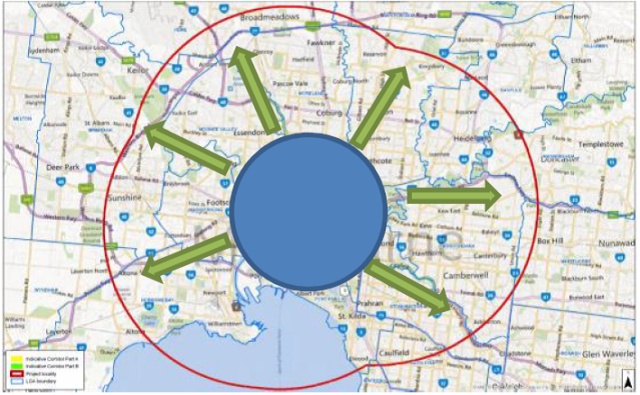 Parking and car use restrictions coupled with better public transport systems, cycle lanes and pedestrian only zones in the inner suburbs would leave space for Melbourne city to grow into one big centre making it more attractive for residents and visitors.
Parking and car use restrictions coupled with better public transport systems, cycle lanes and pedestrian only zones in the inner suburbs would leave space for Melbourne city to grow into one big centre making it more attractive for residents and visitors.
(Source: globalvisonremixed.wordpress.com)
Environment and society in general
More roads mean more traffic and hence more pollution (e.g. noise, CO2, sooty particles). Studies show that already, a big majority of the population is suffering under stress and other negative health impacts from noise and air pollution. Car and trucks are clearly the least preferable modes of transport on land due to their very negative environmental and social impacts and therefore, healthier alternatives should be considered (see above).
Expected negative impacts of the project on the broader environment and society include: further climate forcing, more stress, more aggression, increased health costs, and further degradation of the environment.
Public transport
In light of the economic costs for this project it is clear that there will unlikely be enough money for necessary investments in public transport. While already lacking capacity today, further population growth will make public transport more unattractive and bring frustration and delays for its users if the capacity cannot be increased due to lack of financing.
Democracy
Given the lack of transparency, the poor quality of the information disclosed to the public, and the dictatorial attitude of the Victorian government, another big loser are all people as members of a democracy. As citizens and taxpayers all people of Victoria should have the right to express their opinion about a project that they are going to pay and that is considered to be “the largest infrastructure project of this type being offered for tender anywhere in the world this year.”
The fact that there is not enough room for a public opinion, justified criticism or evaluation and assessment of alternatives doesn’t speak for the government and is a setback for democracy.
We might wonder why Mr Mulder (“engaging with industry early would enable construction to begin as early as possible.”) is in such a hurry? Does he have anything to fear? Why so much rush to start the work before the state elections next year?
Tax payers
With a cost estimation of 6 to 8 billion to be carried by Victorian taxpayers, they will be among the bigger losers. According to The Age “Shadow treasurer Tim Pallas predicted the project could strangle the life out of Victorian budgets for decades to come”. To make the tendering process more attractive, the government apparently promised that Victorian tax payers will bear the cost if traffic flows are lower than anticipated. A scenario that could easily happen as similar road projects in Sydney and Brisbane have shown. Experts warn that the calculations, in which the government grounds the profitability of the project, might as well be wrong for this case.
Future generations
With no doubt, future generations will have to put up with a heavy legacy. Not only will they never get to see all the recreational and cultural benefits of Royal Park and surroundings we could enjoy so far, but will have to pay off a financial depth that will accompany them well into the future. Instead of being able to invest in public transport, they will have to carry the costly burden of an economic deficient East West Link. And while more road traffic will only contribute to further environmental degradation, it can be expected that by then, more stringent GHG[1] emission reduction targets [2], for example in form of further and higher carbon taxes, will cause additional financial burdens for households.
The situation for future generations might be worse if we consider that future needs might vary significantly from today’s expectations. Studies show that younger people value the protection of the environment as a priority, that they prefer to live in the inner city instead of traveling long distances to their homes, and that increasingly, they have no interest in driving cars. It might not seem obvious to us, but under such tendencies, it’s likely that in 10 years, road traffic might be significant lower than now expected. Preferences and ideologies change over time and technical masterpieces that cost a fortune may turn into environmental time bombs within decades, as an example shows.
“The winners”
Given the lack of information, one can only make assumptions about possible winners.
Foreign companies
Treasurer Michael O’Brien and Transport Minister Terry Mulder have proudly announced that the project has attracted interest from around the world. Knowing about the crisis they are suffering in Europe, one can guess that it’s rather the pressure of further job cuts rather than the prestige of this project which brings these companies to Melbourne. Besides, they don’t carry the financial risk, which as we have already learned will be covered by Victorian taxpayers
Other companies in need of work
It has been pointed out that one of the companies that is making money with the project might have every interest to do so, because they are currently banned from winning projects for the World Bank as a result of having been involved in different types of fraud.
Land owners
While I have outlined above that some house owners might lose their homes, others might get financial benefits through land sales. However, if that is the case and who those land owners would be, is only a hypothetical potentiality.
A few individuals
Some individuals might benefit in the sense that they can leave their legislation period saying that at last (or least?), they created something “lasting”.
To sum up, no matter how hard one tries, it is difficult to find potential benefit in this project. While the losers will be numerous, it might fill some individuals with pride if their project plans attract echo from around the world. Given the circumstances, they shouldn’t be surprised if in twenty years their grandchildren will feel ashamed of what their ancestors have done. Whereas they themselves might now only think about doing something remarkable within their legislation period, and given their age, do not need to worry so much about the future, the rest of us who will have to be around for a bit longer and therefore, might want to consider the issue more in detail. As those bearing the cost of the project, we have all right to do so, not that one day we will have to look back in anger and feel ashamed of silently having witnessed a decision that wrecked what today is considered to be the most liveable city in the world.
Regret always comes too late, and other than false pride, it won’t leave anyone better off. Everyone with a bit of common sense will see that the only solution to this irresponsible project is to stop it before further damage is being undertaken – for the sake of all of us as well as our children and Melbourne as the wonderful city it is.
[1] GHG = Greenhouse Gases
[2] Under the assumption that if we want to keep the target of global mean temperatures increase below 2° C, measures will have to be stronger, the longer we wait with reducing emissions. The consequence might be that in the future, traffic would have to be included in a carbon tax.

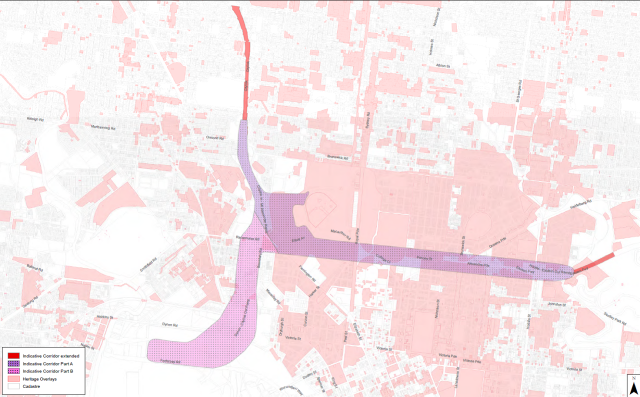
Thanks. Excellent work.
Great article!
Thank you. I’m happy you like it and hope it will have some impact!
Pingback: Repeating the Wonthaggi disaster: Why the East West Link is prone to fail | Ideas for a greener environment, a fairer society and a future driven by sustainability
Pingback: What you can learn from your most recent water bill | Ideas for a greener environment, a fairer society and a future driven by sustainability
Great Article!
Howdy, just a heads up that a community coalition is forming in the lead up to the Public Hearings for the EWL project. One of the aims is to find the commonality between groups so that we can all make the most of the limited time available at the Hearings.
Pingback: How royals can change the world | Ideas for a greener environment, a fairer society and a future driven by sustainability